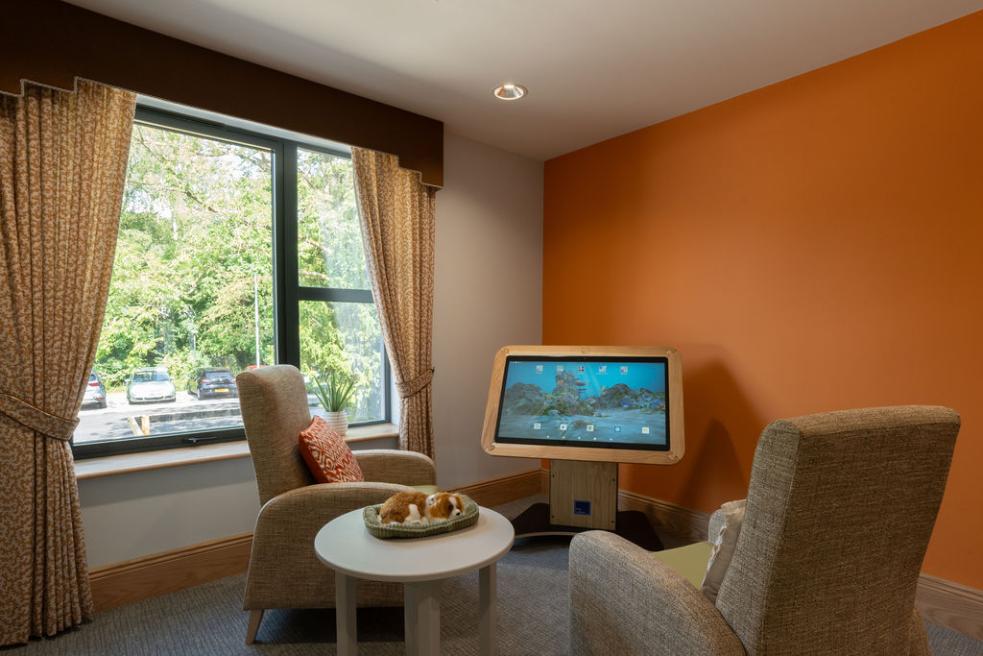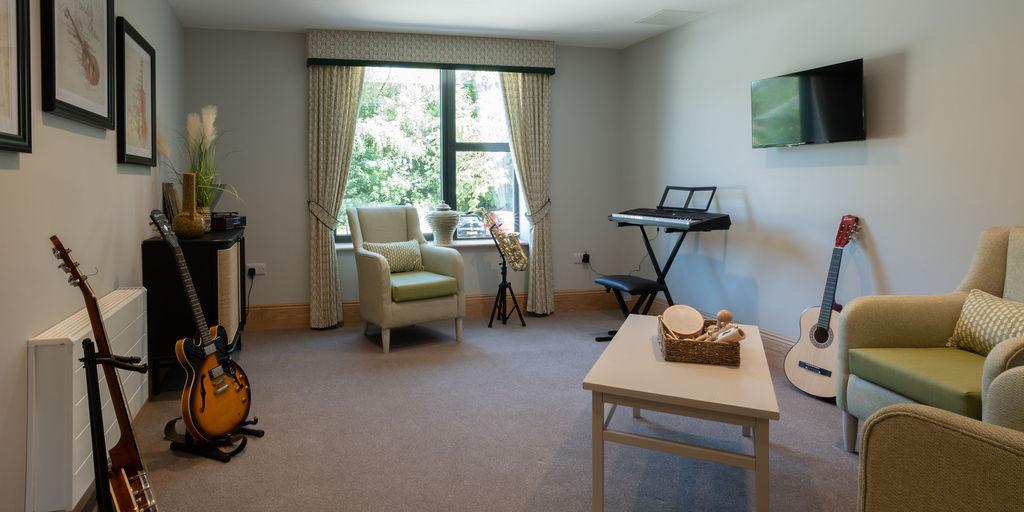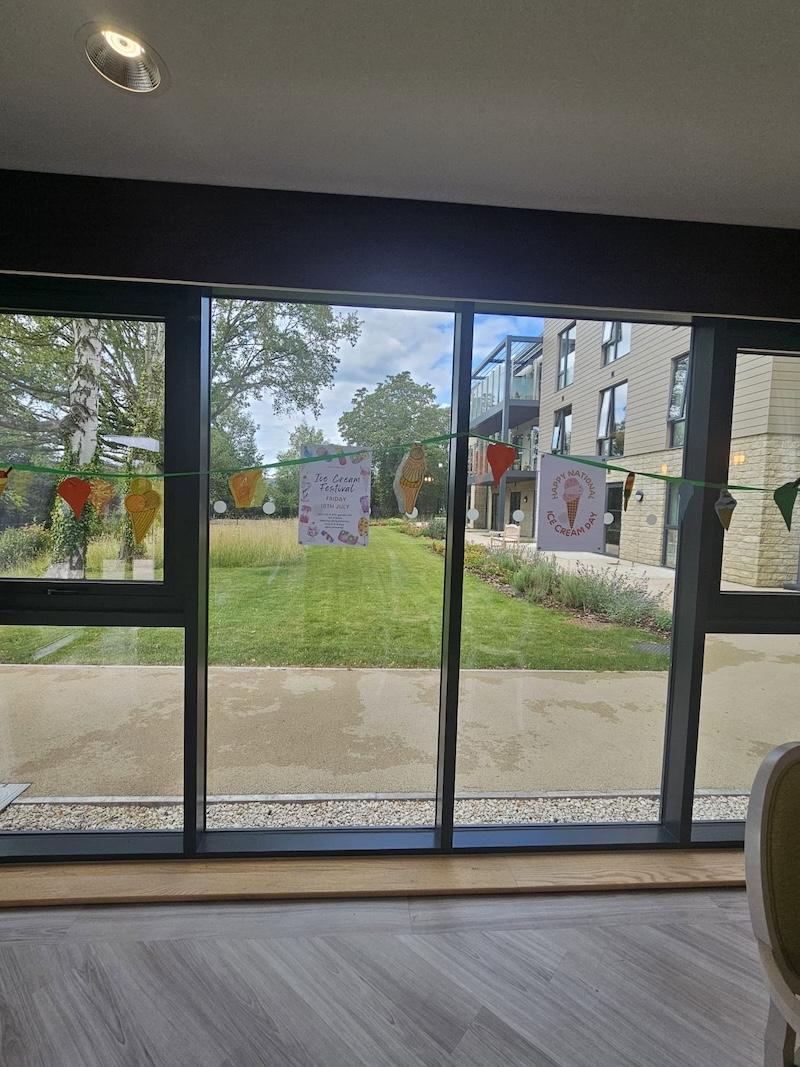The Benefits of a Care Home Sensory Room

When choosing a care home for a loved one, families naturally want reassurance that all aspects of well-being are being considered, especially for those who may benefit from sensory stimulation. Sensory rooms are being increasingly recognised as a leading facility in modern care homes as they provide residents with access to spaces that stimulate all aspects of their senses. Sensory rooms are specially designed environments that use a diverse range of sensory equipment, sounds, lights and tactile objects to create meaningful experiences. In this blog, we explore how sensory rooms enhance the daily lives of residents and promote emotional well-being.
What Is a Sensory Room?
A sensory room is a carefully designed space within a care home dedicated to stimulating all the senses in a safe and controlled way. These rooms are tailored to the sensory needs of residents and include elements such as soft, coloured lighting, comfortable furnishings, soothing sounds and a mix of tactile objects and sensory equipment. Although they were originally designed for people with cognitive impairment, sensory rooms now play a significant role for every care type.
By allowing residents to explore different sensory elements at their own pace, sensory rooms provide a calming environment away from the sometimes overwhelming cognitive demands of daily life. This calming space is vital in care settings where individual differences in mood, focus and physical ability are respected and supported.
What Is Dementia Care?
Dementia care is designed to support those living with conditions that affect memory and cognitive abilities, such as Alzheimer’s disease. In a care home setting, dementia care is focused on providing a secure, structured environment where residents receive regular support with day-to-day activities. Care providers are trained in communication techniques, behavioural support and safety measures that address the unique challenges of dementia. The aim is to maintain dignity, promote emotional well-being, and help dementia residents stay engaged with life to the fullest extent possible, even as their condition progresses.

How Do Sensory Rooms Benefit Those with Dementia?
Sensory rooms offer significant advantages for residents living with dementia. These specially designed environments provide a safe and soothing retreat where the focus is on sensory stimulation, all tailored to individual needs. For those experiencing side effects of their dementia, including anxiety or confusion, the calming effects of a sensory room can help reduce agitation and promote relaxation.
The sensory equipment and tactile objects found in these rooms encourage gentle exploration and engagement, which can enhance mood, stimulate memory and foster moments of connection. Activities involving familiar music, coloured lighting, or textured objects may evoke positive feelings and spark memories from earlier life. This helps support their emotional well-being and provides opportunities for residents to express themselves through various means.
The Importance of Sensory Stimulation For All Elderly Residents
As we age, our senses can become less sharp, which can lead to feelings of isolation or restlessness. Dedicated sensory activities can help maintain or improve fine motor skills, while regular sensory play can promote better focus and engagement with the world around them.
For residents living with sensory impairments such as visual impairment or reduced hearing, a sensory space offers a multisensory environment where other senses can be awakened and strengthened. Textured objects, gentle music and soft lighting can evoke familiar memories and help them feel more comfortable and at home. Touching tactile features or interacting with familiar everyday objects can also ground residents, especially those who might otherwise feel disconnected.
Enhancing Communication and Social Engagement
One powerful benefit of sensory rooms is their ability to help residents develop communication skills in non-traditional ways. For those who may struggle to express themselves verbally, sensory stimulation through a combination of sound, touch and visual elements gives new outlets for connection. A calming sensory space can become a backdrop for meaningful interaction between residents and those around them.

Reducing Anxiety and Supporting Emotional Well-being
Sensory rooms provide residents with a sanctuary where anxiety and agitation can be soothed. The use of carefully chosen sensory elements creates an environment that helps residents relax and unwind. These sensory spaces are especially valuable for those who may experience confusion or agitation.
By offering a setting where residents can focus on pleasant sensory experiences, care homes can offer an improved quality of life for their residents. This is particularly important during moments of distress, following hospital stays, or when adjusting to new environments.
Promoting Physical Benefits
Sensory rooms offer more than emotional comfort. They also promote cognitive function and physical health. Residents can engage in sensory activities that stimulate their movement, coordination and fine motor skills. Touching or manipulating sensory objects helps exercise hands and fingers, which supports joint flexibility and circulation.
Exposure to familiar scents, sounds, or music within the sensory space can remind residents of prior, fond memories and help them feel more at home or connected with like-minded residents or care staff. Through a blend of relaxation and gentle stimulation, a well-equipped sensory room can become a cornerstone of effective residential, nursing, dementia and respite care.
Creating a Calming and Inclusive Environment
The entire room is designed to be accessible and adaptable to the diverse needs of residents. By having multiple areas within the room to explore, residents feel safe exploring at their own pace with aspects that interest them most. This also contributes to a feeling of calmness because residents don't feel rushed or pressured with their activities.
Family members also benefit from knowing their loved one has access to a sensory space that meets their unique needs. Visits to the sensory room can provide a bonding experience, giving families a new way to connect and share special moments together.



Our Sensory Room at Darcy House Care Home
At Darcy House Care Home, we recognise the far-reaching benefits a sensory room can bring to residents and their families. Our music and sensory room is a specially designed haven filled with soothing sounds, comfortable furnishings, an interactive screen, musical instruments and calming colours. We are committed to offering first-class facilities and exceptional care that prioritises overall quality of life for all of our residents.
Our caring team uses the sensory room to provide residents with opportunities for relaxation, stimulation, and connection. Whether they are supporting those living with dementia, encouraging gentle movement, or fostering new ways to communicate, the sensory space at Darcy House is an essential part of the outstanding care we deliver.
Alongside our sensory and music room, we offer several other in-house facilities for our residents to use at any time, including our hair & nail salon, cinema room, café and luxurious private gardens. Whether you require residential care, nursing care, dementia care or respite care, there is something for everybody here at Darcy House.
If you are searching for a care home in Matlock that values emotional well-being and offers a purpose-built sensory environment, we invite you to visit Darcy House, meet our team, explore our facilities and learn more about how we can support you or your loved one.






